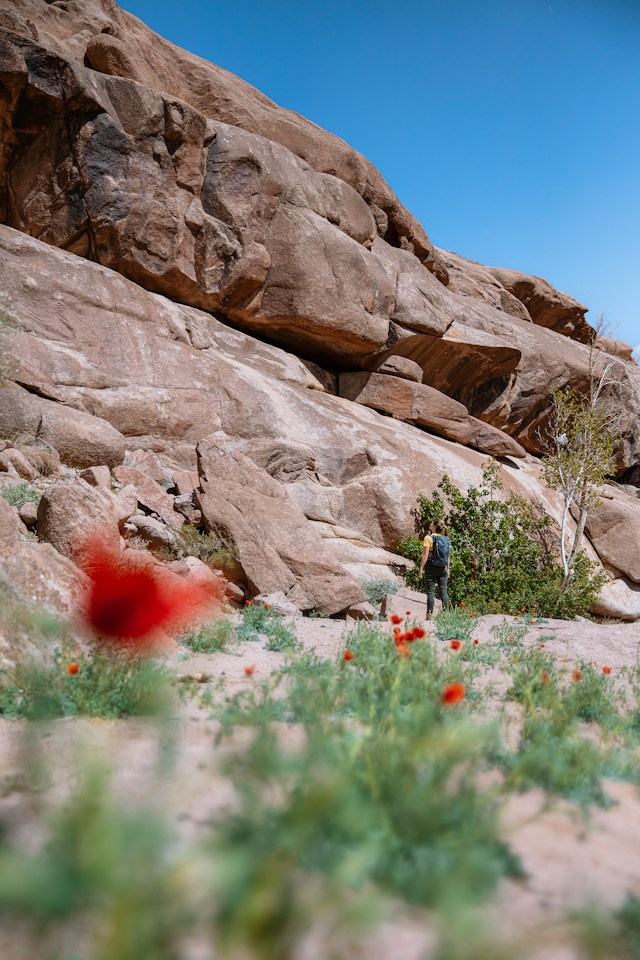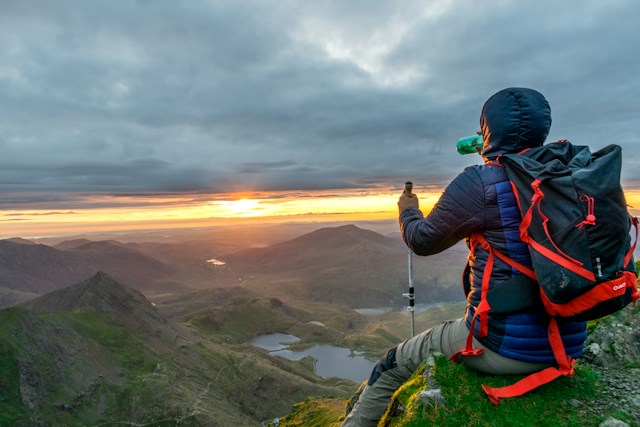Hiking, especially uphill, can often leave you breathless. It gets even worse for people with asthma who already struggle with shortness of breath, chest tightness, coughing, and wheezing. Does that mean asthmatics should give up on hiking? Certainly not! If you’re one of us and feel hesitant about walking in the wild, then hopefully this article will teach you how to hike with asthma.
I’ve struggled with asthma since I was a little kid. Asthma runs in my mom’s family, so that’s very likely where I got it from. I still remember the times when I would be gasping for air, and needed a nebulizer to help me breathe. Almost every seasonal flu would turn into a nasty bout with bronchitis. I hated spending time in nature because flowers and trees would flare up my asthma. Whenever we visited my grandfather in the countryside for a weekend, I would be sneezing, coughing, and wheezing the whole time.
However, things have changed significantly for me over the years. It’s much better now. Taking my daily allergy medicine, regular exercise, and being aware of my asthma triggers helped a lot. I had to use my Albuterol inhaler almost on a daily basis back then, but now I feel I need it only a few times a year – thankfully!
What are the common triggers of asthma?
- Allergies: asthma is often triggered by allergies, such as pollen, dust mites, mold, pet dander, or food.
- Environmental factors: such as altitude changes, smoke, air pollution, strong fumes, or insect bites and stings.
- Weather: breathing in cold dry air or excessive humidity can often trigger asthma.
- Sickness: the common cold or sinus infections.
- Exercise: exercise-induced asthma is very common among asthmatics, especially those who do not exercise regularly.
…and plenty of other triggers. Believe it or not, I needed my rescue inhaler every time I participated in a conversation that led me to laugh a bit too much. Yup, excessive laughter triggers my asthma.

How To Hike With Asthma?
Asthma should not prevent you from enjoying your time in the backcountry. But to make sure your lungs can take it, there are a few things to keep in mind.
1. Consult with your doctor
Always start here. If you never hiked before, or noticed that your asthma is acting up on the trail, it’s important to talk to your doctor about it. Your doctor will help in many ways to ensure safe and enjoyable hiking experiences:
- Assess the severity of your asthma and prescribe the right medication and dosage for your individual situation.
- Educate you about asthma triggers and how to effectively manage them on and off the trail.
- Monitor your progress with regular check-ins and adapt your treatment plan based on your progress.
2. Carry your inhaler
I NEVER go hiking without my rescue inhaler. Yes, I rarely ever use it now, but you never know when and what might trigger my asthma. When that happens, my inhaler will be much needed and I’ll be thankful I’ve packed it in my first-aid kit.
If you usually use your inhaler on a regular basis, then you should not stuff it in your first-aid kit. Instead, make sure it’s easily accessible in your hip-belt or one of the outer pouches of your backpack.
3. Choose the right trail
The choice of trail can greatly influence your experience when hiking with asthma. Always start small by selecting a short and easy trail with minimal elevation gain (under 500ft / 150m). Increase the distance and difficulty of your hike when your fitness improves and you gain more confidence in your ability to tackle more intense trails.
Other factors you would need to consider when selecting a hike are the altitude and environment of the trail. Hiking at higher altitudes can put additional strain on the lungs, making it more challenging for those with asthma to breathe. Similarly, you might want to avoid hiking in areas where pollen, mold, or dust are common.
4. Warm up
Before you start your hike, take some time to warm up. Easy walk for 5-10 minutes, mixing it up with some high knees and light jogging. In addition to preparing your muscles for the intensity of the hike, it’ll also condition your lungs for exertion.
5. Take enough breaks
Even if you’re out with a group, make sure you hike your own hike. Don’t be too harsh on your lungs. Give them as many and breaks as you might need to catch your breath. Just because your friends who are not asthmatic can go on for 30 minutes straight without taking a breather, does not mean you should too.
6. Protect against asthma triggers
If you’re hiking in the cold or in an area where there’s too much dust or pollen in the air, this will inevitably trigger your asthma. To avoid that, cover up your nose and mouth with a piece of clothes or a mask to heat up the air and filter it out of pollutants before it gets to your lungs.
7. Drink enough water
Having enough water is essential for anyone hiking. It’s even more critical for someone hiking with asthma. Drink plenty of water to stay hydrated. This can help to loosen mucus and make it easier to cough up.
The general rule of thumb is to carry half a liter of water for every hour of hiking. I would advise you to carry more than you think you need, but not too much, though. Alternatively, use a water filter if you know there are water sources along the way. This will significantly reduce the weight you carry on your back.
8. Consider carrying a satellite communicator
You do not always get the best cellular service when you’re hiking away from civilization, especially in the backcountry. If you do not feel safe venturing into the wild and being disconnected, then a satellite communicator such as the Garmin inReach Mini 2 is what you need. Such a device allows you to keep in touch with your friends and family, or send an interactive SOS message in case of an emergency, even without cellphone coverage.

Dealing with an asthma attack while hiking
If you experience an asthma attack while hiking, it’s important to stay calm and take the following steps:
- Stop and sit down: Immediately stop hiking and sit down in a comfortable position. This will help to conserve your energy and make it easier to breathe.
- Use pursed-lip breathing: Pursed-lip breathing can help slow your breathing and open your airways.
- Use your rescue inhaler: If you have a rescue inhaler, use it as prescribed by your doctor. This will help to open up your airways and make it easier to breathe.
- Move away from triggers: If you’ve had asthma for a while, it’s very likely that you know what triggers it. When the attack happens, identify the trigger and move as far away from it as you could.
- Call for help: If you feel like you cannot continue, try to call 911 if your phone has service. Alternatively, if you’re carrying a satellite communicator, make sure you use it to send out a call for emergency teams in the area.
Final Thoughts On How To Hike With Asthma
Having asthma might be an inconvenience in the way of your hiking adventures, but certainly shouldn’t be a showstopper! Understanding what triggers your asthma, accounting for it while planning your hike, and managing it effectively on the trail will ensure a pleasant hiking experience. I hope these tips for hiking with asthma are going to help you step outside and have amazing memories in the wild!
Do you struggle with asthma? Share your experience and how you manage to hike with asthma in the comments below!
